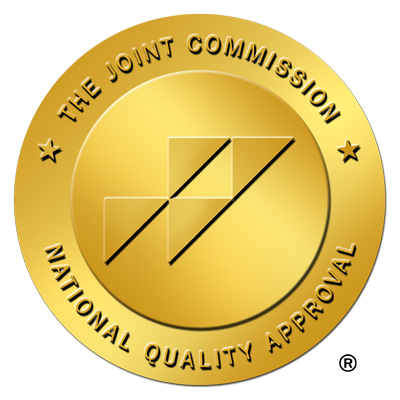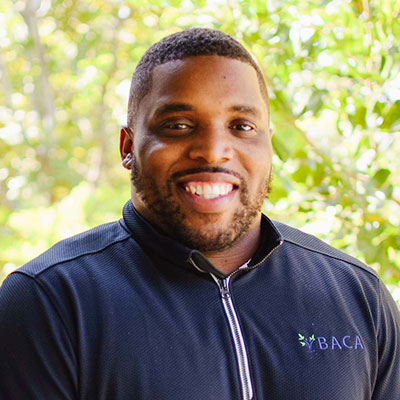We all desire to feel happy. And we all want the same for our children. Whether you are a parent, educator, caretaker, family member, or friend, you probably wish for the children in your life to be successful. But what does it mean to be happy and successful? Culturally, we put a lot of emphasis on the external or “the resume” – children’s accomplishments, friends, schools, activities, skills, and external personas they show the world. We imagine them making good grades, more than enjoying the process of learning, or speaking multiple languages, more than understanding the language of emotions. However, research is clear on what children need to thrive, and it includes safe spaces to explore, understand, and tolerate their internal worlds as much as their external.
I encourage us, as a society, to grow our meaning of happiness and success to include the many layers of our children’s well-being – physical, psychological, social, emotional, sexual, and spiritual. Here are 5 reasons why we need to expand school-based physical education (PE) to include mental health (MH) education across all ages.
1) Good Mental Health is a Basic Need
You may have heard the statistics that 1 in 5 known adults in the U.S. struggle with their mental health, such as depression or anxiety, at some point in their lifetime. However, the statistics for children are even higher. An estimated 49.5% of adolescents, ages 13-18, have struggled with a mental health disorder at some point in their lives, and 22% have experienced it on a severe level. Additionally, we know firearm related deaths are the leading cause of death for ages 1-19 years old, including suicides and homicides – this is another statistic that is steadily increasing year over year.
I desire to speak truth to the very real shadows of our society that are impacting the children we love. However, incorporating mental health education within school communities benefits all children, regardless if they are struggling or not. As a family therapist who loves a good reframe, I want to advocate that mental health education is as necessary as brushing our children’s teeth and feeding them a warm meal. If your child’s mental health is thriving, great! Let’s continue to support that by allowing them to explore their social emotional needs daily. We can all benefit from strengthening our EQ skills to enhance ourselves personally and professionally.

2) Strong Emotional Intelligence (EQ) Helps Children Thrive
At the earliest of ages, doctors and caregivers notice key developmental milestones children are obtaining, like crawling, walking, and talking. Eventually, we notice the social emotional skills our kids have been learning since in utero, such as self and social awareness, conflict resolution, and regulating emotions. Research shows that children who are able to identify, tolerate, and manage their feelings, especially challenging ones such as anger, fear, disgust, and sadness, are more likely to have higher self-esteem, higher academic performance, stronger relationships, and grow invaluable problem-solving skills they will need for the rest of their lives.
When I worked in schools, I saw the benefits of teaching social emotional learning (SEL) first hand. One day during lunch, I noticed Theo, a six year old first grader, angrily pacing in the cafeteria. With curiosity, I approached him and asked how he was feeling. He replied, “No one cares about me.” As I bent down to look him in the eyes, I really listened to his pain about his birthday. I named his overwhelming feelings by asking, “Theo, you seem sad. Are you sad?” He stopped pacing, his shoulders relaxed and with tears in his eyes he said, “Yes, I feel a lot of sad.”
A few weeks later, Theo was in my weekly SEL group, and I asked the students, “What does it mean to feel sad?” Theo raised his hand and gave the most eloquent answer that ended with, “But you can also feel joy after you feel sad too.” Teaching children how to identify these parts of themselves at the earliest of ages will not only give them a stronger sense of self, but will allow them to feel less alone and more a part of a community. Allowing people of all ages and backgrounds to feel seen and welcomed, and also to welcome others, is a value we need to continue to strengthen within our society.
3) Mental Health Strengthens the Values We Need as a Nation
Mental health programs, especially those that focus on people who struggle with the meaning of life, often include exploration of their top values and how the person can closely align to them. Similarly, what are the values we’d like to focus on and live by as a society for future generations? By focusing on mental health, children would align to essential values such as high self-esteem, curiosity, empathy, and resilience. For example, research shows that expressive art programs, such as the SEL group Theo attended, empowers children’s self-concept, resilience, and interpersonal skills.
Teaching children to explore their internal worlds may seem individualistic in nature, but it is through this process that future generations will be more equipped to work collectively, change problematic systems, and collaborate on global problems. In other words, through better understanding the “I” and “me,” I am more freely able to transform the “we” and “us.” By gaining strong holistic health, America would live closer to values, such as inclusion, equity, freedom, security, and innovation. Thankfully, some states are currently implementing mental health across their school communities.
4) Some States Already Seeing Success within Schools
In 2018, New York and Virginia were the first states to pass laws that mandated mental health education across all public schools. New York ensured mental health was being taught across K-12th grades, and they allowed each school district to decide how to implement the legislation. One school district, Niagara Falls City, has seen a lot of success after incorporating mental health across several classes including drama, dance, athletics, music, and chess.
Other states have followed this movement by prioritizing education, prevention, and services within schools as well. For example, California had a team of health professionals work together on a K-12th Health Education Framework that details all categories of health to support schools in expanding their wellness curriculums. Other states have adopted prevention programs, as well as clinical services like wellness centers. While the implementation of each state and school district looks differently, the value behind these laws are the same: good health is multidimensional. As we know, mandating laws does not guarantee effective integration and outcomes, but there is an abundance of programs and interventions that are proven to prevent, maintain, and improve good health for all ages.
5) Abundance of Evidence-based Interventions and Programs for Schools
Evidence-based mental health programs and interventions are like a web of interconnected approaches that can effectively support communities based on their unique needs. Simply put, providing a list of all the effective programs both nationally and locally would be challenging. However, here is a high-level look at what some schools are implementing:
- suicide prevention and intervention programs
- bullying prevention and intervention programs
- trauma-informed and social emotional staff trainings
- mental health screenings and increased staffing
- wellness centers that include group, family, and community services
Within these programs, we see several evidence-based modalities that have shown to effectively support children, including children of color and a part of the LGBTQ+ communities. Schools often encourage SEL curriculums as well as non-talk therapies, especially for children of younger ages. Here are a few child-centered therapeutic interventions that are often interwoven together with SEL:
- expressive art, including art, drama, music, dance, sand tray, play, etc.
- somatic-based, including yoga, emotions in the body, etc.
- self-compassion based, including mindfulness, breathing techniques, etc.
Similar to New York, we need to creatively integrate education within daily classes. Just like sports are used to engage children in PE, expressive and somatic arts can be used to engage children in MH.

Why Has This Not Happened Already?
There are plenty of reasons schools do not mandate nor include mental health within their campuses, especially preventative education. Some top reasons include:
- Complexity and stigma of problems makes society avoid mental health altogether
- Challenges with funding and resources within schools, including impossible expectations on teachers/staff
- Competing priorities within schools, including lack of time for new curriculum
- Competing social values and skepticism from families and some staff, including questions like, “What will you be teaching my child?”
Mental health education is a large piece of an overall puzzle in combating poor health across the U.S. Like I encourage clients, let’s focus on progress not perfection and continue to adapt along the way.
Advocate for MH Education in Schools
With stronger holistic health, our children will learn and grow the mental superpowers that support them in riding the waves of life, including inevitable hardships, change, and loss as well as joy, excitement, and love. They will have the skills to create much richer, fulfilling moments that allow them to not just feel happiness, but more connectedness and compassion with themselves and others. If you believe in just one of the five points above, then I encourage you to reflect on the importance of good mental health for yourself and the children in your life.
Then, advocate to expand PE and incorporate MH within K-12th grade schools. With the support of organizations like The Council for Awards in Care, Health and Education (CACHE) and the Department of Education (DOE), you can raise awareness locally with family, friends, and school communities at PTA and school board meetings as well as with legislators at a state level. Advocacy work is more powerful when individuals, groups and school communities come together with humility, courage, passion, and purpose. Afterall, good mental health is learning to explore, honor and share our utmost truths as individuals and as a collective, for the betterment of us all.
References
- Student Mental Health Legislative Trends
- Current Causes of Death in Children and Adolescents in the United States
- Jones, S. (2018, August 16). Schools Are Required to Teach Mental-Health Lessons…
- National Alliance on Mental Health. (n.d.) Mental Health By the Numbers.
- National Institute of Mental Illness. (n.d.) Mental Illness
- Mental Health Adolescents




